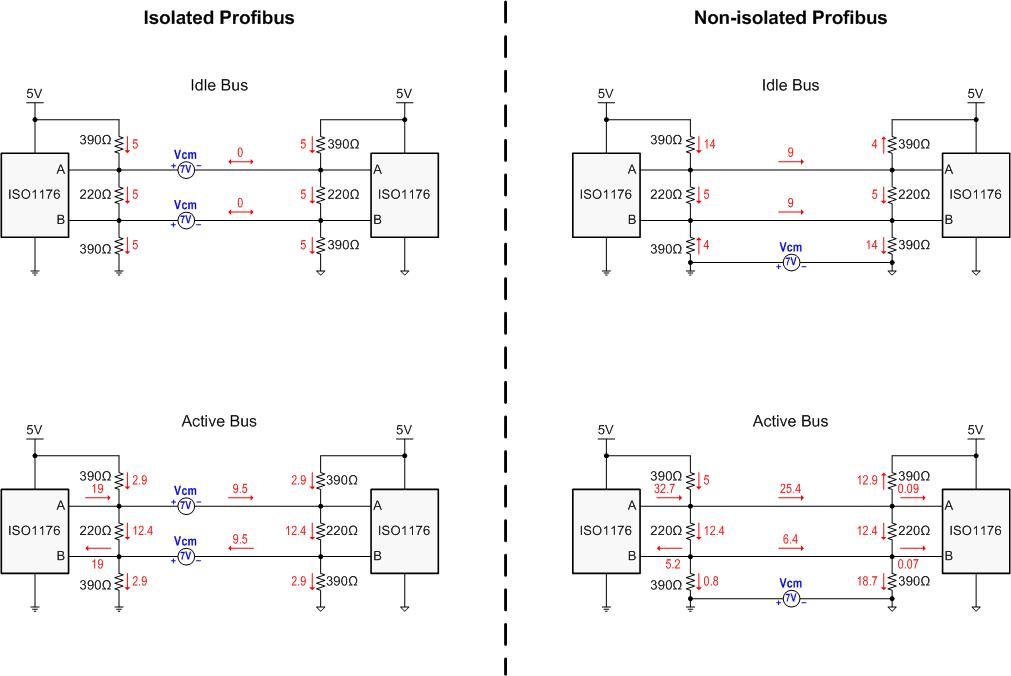I am developing an Profibus module and have a question about the Profibus termination resistor power rating.
We plan to put the termination circuit (390Ohm for bias and 220 Ohm for termination) on board and use a DIP switch to turn it on and off. I selected the ISO1176T as the Profibus transceiver,the isolated supply voltage is +5VDC, and as the datasheet indicated, the voltage on A,B line is -7V to 12 V, and the differential voltage between A and B is -12V to 12V, and I calculated the maximum power consumed on the 390 Ohm will be about 12 sqr/390= 0.37W, and 12 sqr /220=0.655W on 220 Ohm resistor, it seems the a high power rating. Is my calculation correct? Please advise.



